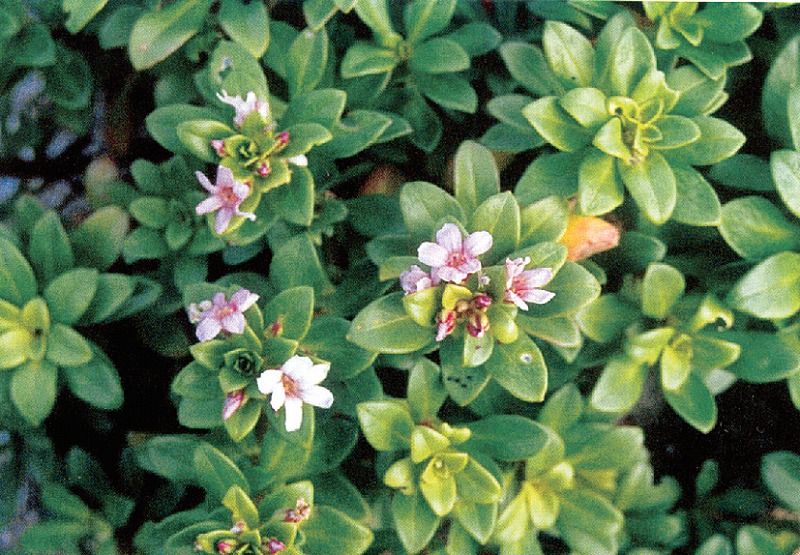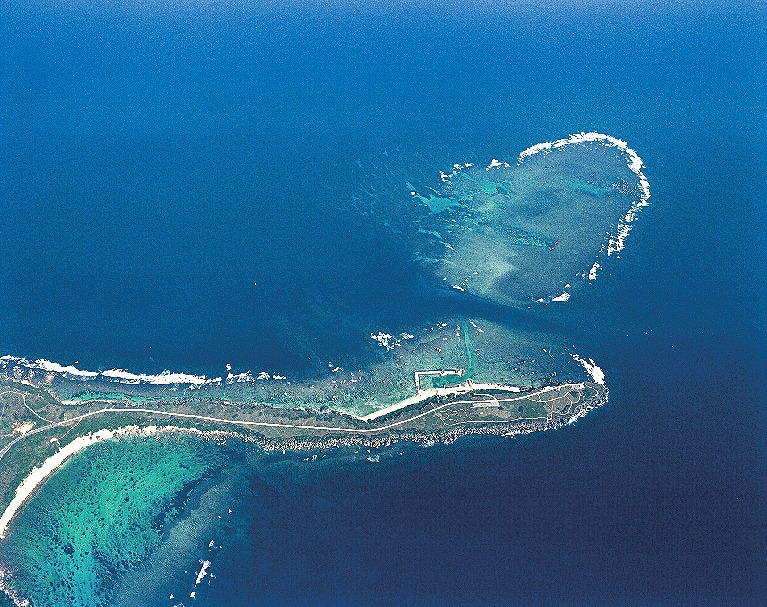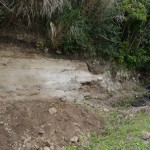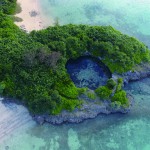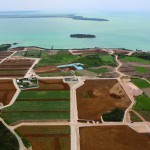【Prefecturally Designated:Natural Monument (Flora)】Plant Communities of the Wind-Beaten Coast at the Protruding Coral Shelf at Cape Higashihenna
Cape Higashihenna at the east coast of Miyako Island protrudes out to the Pacific Ocean, and is of significant importance academically, for the particular vegetation that have adapted to the unique environment and also for the growth of plants that are limited in distribution. The geological formation is that of a Ryukyu limestone plateau, with a length of approximately 2km, width of 250m, and height of 20m. The vegetation is exposed to a harsh environment with sea breeze, etc., and shows growth that is unique to wind-beaten areas.
In particular, the plant community dominated by Hawaiian Hawthorn covers a wide area that is not seen anywhere else, and we can observe other communities of Mizuganpi, Japanese lawn grass, spoonleaf yellow loosestrife, beach naupaka, screwpine, and sea lavender.
The Hawaiian Hawthorn community appears to cover the cliff loosely. The plant, however, has hard stems with much developed cork layers trailing over the rough limestone surface like meshes, which keeps the community low in height and enables it to bear the severe environment. There are 222 kinds of vegetation confirmed in the area, with some rare species from the geobotanical point of view.
① Hawaiian Hawthorn Community
② Spoonleaf Yellow Loosestrife
③ Mizuganpi (Locally referred to as Hamashitan)
④ Cape Higashihenna and Panari
≫View on a Google Map
 宮古島アプリの綾道(あやんつ)トップページ
宮古島アプリの綾道(あやんつ)トップページ 宮古島アプリの綾道(あやんつ)の内容
宮古島アプリの綾道(あやんつ)の内容 宮古島の3つのルート
宮古島の3つのルート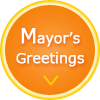 宮古島市長のあいさつ
宮古島市長のあいさつ 宮古島文化遺産紹介
宮古島文化遺産紹介

